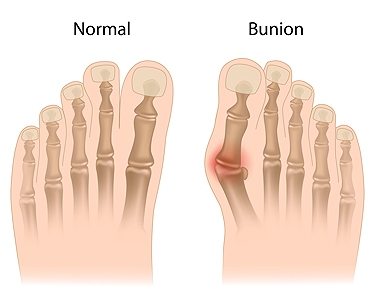
The human foot is a marvel of engineering, composed of an intricate network of bones, tendons, and ligaments that work in tandem to provide stability and mobility. At the center of this complex structure lies the big toe, also known as the hallux, which plays a vital role in maintaining balance and facilitating movement. However, when the alignment of the bones in the big toe is disrupted, a bunion can form at the base of the big toe. This can lead to a further deformity, known as metatarsus primus varus. It results from an abnormal inward angling of the big toe towards the second toe. This misalignment can result in a range of symptoms, including pain, discomfort, and difficulty walking or standing for extended periods of time. While the exact cause of metatarsus primus varus is not fully understood, it is believed to be influenced by both genetic factors and external triggers, such as wearing ill-fitting footwear. People with metatarsus primus varus may experience a variety of symptoms, including pain and discomfort in the foot, restricted range of motion, and skin irritation. Diagnosing metatarsus primus varus typically involves a physical examination and imaging tests such as X-rays. Treatment options may vary depending on the severity of the condition and can include orthotics or surgical intervention to realign the bones and restore normal foot function. For help with managing this deformity, it is suggested that you schedule an appointment with a podiatrist.
If you are suffering from bunion pain, contact one of our podiatrists of Lovely Foot Associates, PC. Our doctors can provide the care you need to keep you pain-free and on your feet.
What Is a Bunion?
Bunions are painful bony bumps that usually develop on the inside of the foot at the joint of the big toe. As the deformity increases over time, it may become painful to walk and wear shoes. Women are more likely to exacerbate existing bunions since they often wear tight, narrow shoes that shift their toes together. Bunion pain can be relieved by wearing wider shoes with enough room for the toes.
Causes
Symptoms
In order to diagnose your bunion, your podiatrist may ask about your medical history, symptoms, and general health. Your doctor might also order an x-ray to take a closer look at your feet. Nonsurgical treatment options include orthotics, padding, icing, changes in footwear, and medication. If nonsurgical treatments don’t alleviate your bunion pain, surgery may be necessary.
If you have any questions, please feel free to contact our office located in Johnstown, PA . We offer the newest diagnostic and treatment technologies for all your foot care needs.